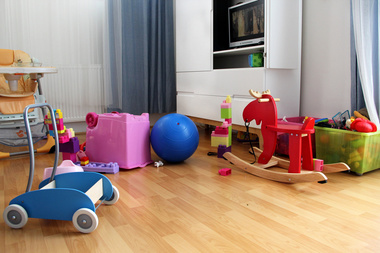How To Childproof Your House
July 12, 2023 | amandasearlerealtor
No matter how watchful you may be, it is inevitable, that accidents will happen. However, there are steps you can take to prevent many accidents from happening . The first thing you will need to is perform a walkthrough of all the rooms in your home to determine what safety features should be installed. Look for electrical outlets that will need to be covered, window blind cords that will need to be shortened, and furniture or appliances that will need to be secured to the wall.
An ounce of prevention
Here are some simple and inexpensive solutions for keeping your toddlers safe and sound: Place doorknob covers on all doorknobs. This will ensure that their little hands cannot grip the doorknob and leave the house or go into rooms with potential dangers. This is especially true for bathroom doors. Lever type door handles are probably the most difficult to childproof, but childproofing locks are available. In the bathroom be sure to install a toilet lid lock. This is good for children as well as pets.
sound: Place doorknob covers on all doorknobs. This will ensure that their little hands cannot grip the doorknob and leave the house or go into rooms with potential dangers. This is especially true for bathroom doors. Lever type door handles are probably the most difficult to childproof, but childproofing locks are available. In the bathroom be sure to install a toilet lid lock. This is good for children as well as pets.
In the unlikely event that your child does manage to get into a bathroom or kitchen unsupervised, it is a good idea to have cabinet locks installed ahead of time to prevent them from consuming cleaning products or medications.
A stove guard is essential. It will prevent curious little hands from being burned by food cooking on the stove, or hot burners. Consider using the back burners of your stove as much as possible.
Here is a good guide on how to keep your children safe:
- Set the temperature of your hot water heater to no higher than 120 degrees F.
- Install smoke detectors on every level of your home and especially near bedrooms.
- Install carbon monoxide detectors near sleeping areas in your homes especially if you use gas or oil heat or have an attached garage.
- Place cushioning bumpers on the sharp corners of tables and other furniture.
- Window guards should be placed on all windows so children cannot accidentally fall out.
- If you have a pool, teach your kids to swim as early as possible. Additionally, install a pool alarm and fencing all around as a preventative measure. When not in use, a rigid pool cover should be used to secure the pool.
- Check the floor regularly for small items and toys that younger children can ingest and potentially choke on.
- Install gates at the bottom and top of your stairs to prevent falls. Adjustable gates are also available to span across doorways of rooms you don’t want your little one to enter or leave.
An ounce of prevention is worth a pond of cure and nowhere is that more important than keeping our children safe at home.
